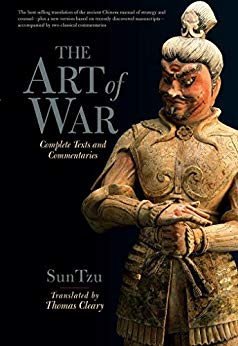

This article is an excerpt from the Shortform summary of "The Art of War" by Sun Tzu. Shortform has the world's best summaries of books you should be reading.
Like this article? Sign up for a free trial here .
What did Sun Tzu mean by “all warfare is based on deception?” How can deception help one secure a military advantage?
As a well-known translation of Sun Tzu puts it, “all warfare is based on deception.” According to Sun Tzu, the author of The Art of War, deception is the key to gaining a military advantage over your opponent.
Here’s how to use deception to get the upper hand over your opponent.
Sun Tzu: All Warfare Is Based on Deception
The goal of any conflict is to control your opponent and overcome them. Controlling their beliefs about your abilities helps you understand their assumptions and plan a strategy accordingly.
Deception includes feigning weakness when you are strong or professing ignorance when you are informed. Appearing to be weak, unprepared, or small in size can lure your opponent into traps and make them susceptible to misguided actions or responses.
For instance, creating a scenario where only a small portion of your force is visible can mislead opponents into thinking they outnumber or outarm you. When they prepare an attack under that guise, they will be ill-prepared for the full strength of your forces.
Another example is allowing your opponent to win small victories or gains. Your opponent may fall victim to greed or an inflated ego, which will confuse and hinder their strategy when the truth is revealed.
Deception as an Intelligence Tool
According to Sun Tzu, the author of The Art of War, deception is also great way to gain information about your opponent. If they think you are weak and they attack, you know the level of their aggression and greed.
Any time you can confuse or deceive the opponent, you force them to adapt. In these adaptations, you can discern their patterns of movement, strength of force, and tendencies to react.
- This information becomes useful in determining how to strategize against them.
- You will know in which situations they will fight and which they will run.
- You can determine when lives will be threatened and when lives can be saved.
- You can find out where the gaps in their strength are, otherwise known as vulnerabilities.
- With this information, you can strategize when attacking is beneficial and when defending is more beneficial.
Historical Example: Manipulation through Deception
When a Chinese emperor was strategizing an attack on the Han dynasty, which had joined forces with the Huns, he sent a scout to scope out the Huns’ forces. Ten scouts returned after seeing old and feeble men milling about and reported that the Huns were weak. However, one scout, Lou Jing, saw the placement of these men as a ruse and reported that an attack would be unwise. The emperor punished Lou Jing for this advice and sent a massive force into Hun territory.
Lou Jing had been right. The hidden Huns forces surrounded the emperor’s men and stranded them for a week without supplies.
———End of Preview———

Like what you just read? Read the rest of the world's best summary of "The Art of War" at Shortform . Learn the book's critical concepts in 20 minutes or less .
Here's what you'll find in our full The Art of War summary :
- How to mislead your enemies to win the war
- Classic examples from Chinese history to illustrate Sun Tzu's strategies
- How to use spies to gather information and defeat your opponents






